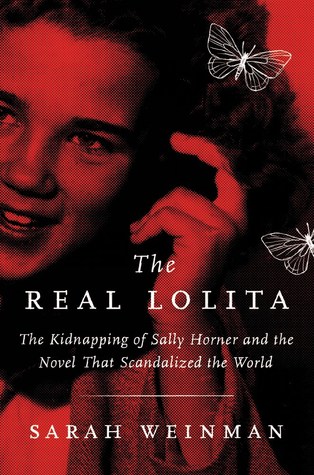More on this book
Community
Kindle Notes & Highlights
Read between
October 29 - October 30, 2023
“Had I done to Dolly, perhaps, what Frank Lasalle, a fifty-year-old mechanic, had done to eleven-year-old Sally Horner in 1948?” —Vladimir Nabokov, Lolita
The appreciation of art can make a sucker out of those who forget the darkness of real life.
“It is strange, the morbid inclination we have to derive satisfaction from the fact (generally false and always irrelevant) that a work of art is traceable to a ‘true story,’” Nabokov chided. “Is it because we begin to respect ourselves more when we learn that the writer, just like ourselves, was not clever enough to make up a story himself?”
Nabokov himself believed the only novels worth reading are the ones that demand to be read on multiple occasions.
“Personally, I never could understand the good of thinking up books, of penning things that had not really happened in some way or other . . . were I a writer, I should allow only my heart to have imagination, and for the rest to rely upon memory, that long-drawn sunset shadow of one’s personal truth.”
What Humbert Humbert did to Dolores Haze is, in fact, what Frank La Salle did to Sally Horner in 1948.
The abuse that Sally Horner, and other girls like her, endured should not be subsumed by dazzling prose, no matter how brilliant.
At almost every stage of his literary career, Nabokov was preoccupied with the idea of the middle-aged man’s obsession with a young girl.
But I suspect La Salle gravitated toward Catholic institutions because they were a good place to hide in plain sight. The Church, as we now know from decades’ worth of scandal, hid generations of abused victims, and moved pedophile priests from parish to parish because covering up their crimes protected the Church’s carefully crafted image. Perhaps La Salle saw parochial schools for what they were: a place for complicity and enabling to flourish. A place where no one would ask Sally Horner if something terrible was happening to her.
Carol’s first experience of deep loss would mark her for the rest of her life. As she grew older and friends began to die, Carol tended to grieve in an open and wild manner that puzzled those around her. “I would hear, ‘but they were just a friend.’ I would hear that about Sally. That we should be moving right along. I wasn’t willing to move right along. I wanted to grieve. And when I finally came out of shock, I did.”
Vladimir Nabokov’s otherwise scrupulous archive of Lolita-related clippings failed to include anything about Sally Horner because if it had, then the dots would connect with more force, which would upset the carefully constructed myth of Nabokov, the sui generis artist, whose imagination and gifts were far superior to others’. It’s as if he didn’t trust Lolita to stand on its own against the real story of Sally Horner. As a result, Sally’s plight was sanded over, all but forgotten.
Lolita’s success almost seemed designed so people missed the point. Its original publication by Olympia Press established its bona fides as a book too controversial for American consumption. And then, once it was finally published in the United States, the conversation centered around Humbert Humbert’s desires and his “love story” with Dolores Haze, with few acknowledging, or even comprehending, that their relationship was an abuse of power. As a result, that left a vacuum for decades of readers to misinterpret Lolita. It allowed for a culture of teen-temptress vamping that did not account for
...more
Trainer’s literary contributions might have stayed forgotten save for an improbable twist: in its Japanese translation, The Lolita Complex became a foundational text for the development of manga and anime, particularly the “lolicon” subgenre where little girls with big doe eyes are depicted as objects of desire and in explicit sexual situations. (“Lolicon” is a portmanteau of “Lolita Complex.”)
The dark heart of Lolita, and the tragedy of Dolores Haze, may now be too much to transform into entertainment. It’s wiser, and saner, to remember the little girl at the center of the novel, and all of the real girls, like Sally Horner, who suffered and survived.
IN READING LOLITA IN TEHRAN, Azar Nafisi makes the excellent point that Dolores Haze is a double victim, because not only her life is taken from her, but also her life story: “The desperate truth of Lolita’s story is not the rape of a twelve-year-old by a dirty old man but the confiscation of one individual’s life by another.” Without realizing it, Nafisi has made the exact parallel between Dolores Haze and Sally Horner.


